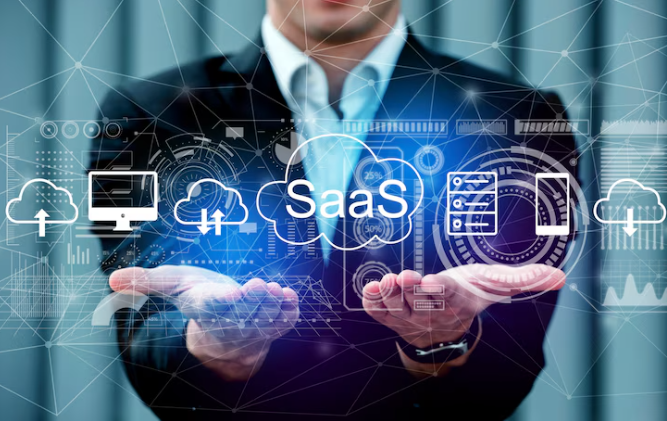The Ultimate SaaS Security Checklist for Your Organization

Audio : Listen to This Blog.
In today’s digital landscape, the adoption of Software as a Service (SaaS) has revolutionized how organizations operate, offering flexibility, scalability, and cost-efficiency. However, with these benefits come significant security challenges that can jeopardize sensitive data and disrupt business operations. Ensuring robust SaaS security is paramount for protecting your organization from potential threats.
In this blog, we’ve created a checklist that will help enterprises to safeguard their SaaS environments and enhance organization’s security posture and mitigate risks effectively.
What is SaaS Security?
SaaS security encompasses the strategies, practices, and technologies used to protect data, applications, and infrastructure associated with Software as a Service. It involves securing user access, safeguarding data in transit and at rest, ensuring application integrity, and maintaining compliance with relevant regulations.
Common Threats:
SaaS applications face several common security threats, including:
- Data Breaches: Unauthorized access to sensitive data can lead to financial loss, legal issues, and reputational damage.
- Account Hijacking: Attackers can gain control of user accounts through phishing, credential stuffing, or other techniques, compromising the security of the SaaS environment.
- Insider Threats: Malicious or negligent actions by employees or other insiders can lead to data leaks or system compromises.
- Insecure APIs: Poorly designed or unprotected APIs can expose vulnerabilities that attackers can exploit to gain unauthorized access.
- Lack of Compliance: Failing to adhere to industry standards and regulations can result in penalties and increased risk of breaches.
Ultimate for your SaaS Security
Here is the ultimate checklist to help your organization fortify its SaaS security and protect valuable data.
1. Access Management
Effective access management is crucial for SaaS security, starting with robust user authentication. Implementing strong passwords and multi-factor authentication (MFA) adds layers of protection against unauthorized access. Role-Based Access Control (RBAC) assigns permissions based on user roles, ensuring individuals only access what they need for their job, reducing the risk of data breaches. Single Sign-On (SSO) simplifies the login process by allowing users to access multiple applications with one set of credentials, enhancing security and easing the management of user access.
2. Data Protection
Effective data protection is essential for safeguarding sensitive information in SaaS environments. Encryption is crucial, both at rest and in transit, to prevent unauthorized access to data. Data backup involves regular backups and comprehensive disaster recovery plans to ensure data can be restored in case of loss or corruption. Data privacy compliance with regulations such as GDPR, CCPA, HIPAA, and PCI DSS is vital for maintaining customer trust and avoiding legal repercussions. Implementing these measures helps ensure the integrity and security of your organization’s data.
3. Network Security
Ensuring network security is fundamental to protecting your SaaS environment. Secure network connections, such as using VPNs and encrypted channels, help safeguard data transmission against eavesdropping and interception. Implementing firewalls and Intrusion Detection Systems (IDS) provides an additional layer of defense by monitoring and controlling incoming and outgoing network traffic, detecting and responding to potential threats in real-time. These measures collectively enhance the security of your network, preventing unauthorized access and maintaining the integrity of your SaaS applications.
4. Application Security
Effective application security involves rigorous vulnerability management through regular security assessments and timely patching to address weaknesses before they are exploited. Additionally, adopting secure development practices by incorporating security into the development lifecycle (DevSecOps) ensures that security is a fundamental part of the process. This includes secure coding practices, regular code reviews, and automated testing, resulting in robust and secure SaaS applications.
5. Vendor Management
Effective vendor management is critical for maintaining SaaS security. Vendor security assessments involve thoroughly evaluating the security posture of SaaS providers to ensure they meet your organization’s security standards. Additionally, carefully crafted Service Level Agreements (SLAs) should include specific security requirements and expectations, ensuring that your vendors are contractually obligated to uphold robust security practices. These steps help mitigate risks associated with third-party services and maintain the overall security of your SaaS environment.
6. User Training and Awareness
Effective user training and awareness are essential components of SaaS security. Regular security training sessions educate employees on best practices, ensuring they understand how to protect sensitive data and follow secure protocols. Additionally, phishing awareness training helps employees recognize and report phishing attempts, reducing the risk of falling victim to social engineering attacks. By fostering a culture of security awareness, organizations can significantly enhance their overall security posture.
7. Monitoring and Incident Response
Effective monitoring and incident response are critical for maintaining SaaS security. Continuous monitoring involves using advanced tools and techniques to constantly oversee the security landscape, detect anomalies, and respond to threats in real time. An incident response plan outlines the specific steps to take in case of a security incident, ensuring a swift and organized response to minimize damage and restore normal operations quickly. Together, these practices help maintain a secure and resilient SaaS environment.
Summary
In this ultimate SaaS security checklist, we covered essential aspects of securing your SaaS environment, including access management, data protection, network security, application security, vendor management, user training, and monitoring and incident response. Each of these components plays a vital role in protecting your organization’s data and ensuring a robust security posture. Continuous improvement in SaaS security is crucial; as threats evolve, so must your security practices. Regularly revisiting and updating your security measures will help you stay ahead of potential vulnerabilities. Implement this checklist to fortify your SaaS security and protect your organization from emerging threats. Stay vigilant, proactive, and committed to maintaining a secure and resilient SaaS environment. Connect with us if you’ve any questions.
